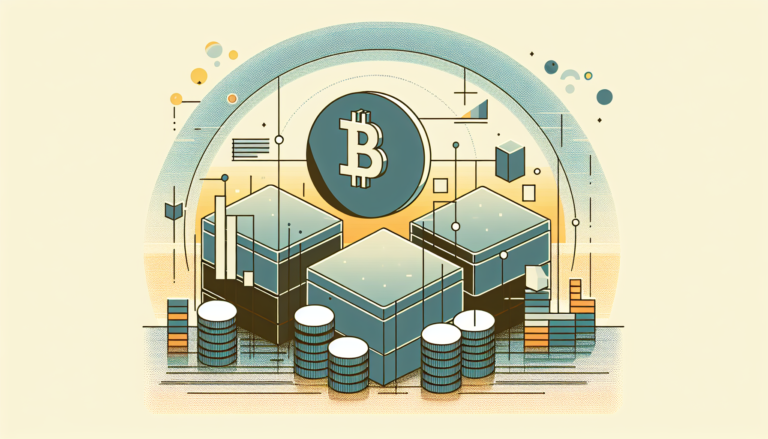Navigating Crypto Risks: My Analysis of DeFi Platform Risks
Understanding DeFi
In checking out the world of DeFi platform risk assessment, it’s important we first get a good grip on what Decentralized Finance (DeFi) is really about. This wild sector in cryptocurrency is shaking up how money stuff is done, using blockchain to give us new ways to handle our cash—no middleman in sight.
Overview of DeFi
DeFi is all about financial tools living on the blockchain. They use smart contracts, which are like digital agreements that run by themselves on the blockchain. This setup lets folks do all sorts of money things—like lending, borrowing, or even getting insurance—without needing those nosy intermediaries (FinTech Futures). DeFi platforms let you do everything banks do but in a chill and decentralized way.
Benefits of DeFi
The perks of DeFi are pretty mind-blowing and go beyond what banks usually offer. Kicking out the middlemen cuts down on costs and headaches that come with old-school financial systems. Plus, because everything’s recorded on the blockchain, it makes snooping and checking transactions super easy, boosting security. That way, it’s harder for shady stuff like fraud and corruption to sneak in, and users can trust what’s going on (FinTech Futures).
Knowing these benefits gives us a good start on weighing up the risks of DeFi. Understanding what decentralized finance can do helps people make smart choices when checking out DeFi platform risks and nailing their risk management strategies.
Risks in DeFi
Looking into the world of DeFi platforms, it’s clear that we’ve got serious stuff to think about. We’re talking about things like how laws affect us, issues in the code that make the whole ship run, and keeping our virtual loot safe from the bad guys. All these things can cause big bumps in the road for DeFi.
Regulatory Challenges
When you start digging into how risky DeFi platforms can be, something jumps out pretty quick: they don’t play by the usual banking rules. And while that’s a cool part of the setup, it can also mean trouble from the folks in suits who make the rules. These platforms could be operating outside what the law of the land allows, and that could lead to some serious headbutts with the authorities. Just look at what happened with LBRY, when the SEC came down on them saying their tokens were acting too much like stocks. A huge reminder for everyone to keep one eye on the law (DISB) and (Synodus).
Smart Contract Vulnerabilities
Smart contracts? Yeah, they’re the brains behind DeFi. But let’s not pretend they’re foolproof. Once these contracts are out there, if there’s a bug or a glitch, it’s like putting a lazy guard on the treasure chest – nothing much you can do afterward except watch it go wrong. Hackers and their bags of tricks like reentrancy attacks, flash loan disasters, and Oracle mess-ups are always ready to pounce. Those stories where folks lost millions in the big DAO attack in 2016 remind us that these cracks need to be patched up tight.
Security Concerns
Gotta talk about keeping the fort secure. If you’re not on top of things, DeFi platforms can get hit with everything from those sneaky price spikes to funny business with Oracle manipulation. Keeping users from running off and investors feeling confident requires tight security. Let’s not forget about the insiders – sometimes the danger’s coming from someone invited to the party. Sloppy or rogue insiders can cost a fortune. Ensuring you’ve got ironclad locks in place to prevent incidents like credential theft is critical (Synodus) and (Syteca).
So, when we’re figuring out DeFi risks, it ain’t just about knowing the rules or fixing the code. It’s the whole package – playing nice with the regulators, tightening those smart contracts, and locking everything up security-wise. This way, we’re making sure the world of DeFi doesn’t fall apart at the seams.
Types of DeFi Risks
Taking a dive into DeFi risk assessment, it’s essential to get a good grip on the different kinds of risks you might face in decentralized finance. Risks in the DeFi scene show up in many ways, like money problems, tech hiccups, and issues within the blockchain itself.
Financial Risks
One big financial risk that pops up with DeFi platforms is something called impermanent loss in liquidity pools. Let’s say you’ve parked some assets in a pool, and suddenly their value is doing a wild jig – you could end up in the red. Then there’s the rollercoaster of price volatility and Oracle manipulation – both mess with the stability of DeFi projects. It’s vital to keep an eye open for these money-based gremlins to protect resources and keep faith in DeFi strong.
Software Risks
In DeFi land, smart contracts are the lifeblood; they keep transactions tickin’ without needing a middleman. However, if these smart contracts have a glitch or a bug, it’s game over – financial disasters waiting to happen. Stamping out vulnerabilities in smart contract codes is crucial to keep DeFi platforms secure and sound.
Blockchain Risks
Blockchain is the bedrock of decentralized finance; it’s supposed to be the guardian of transparency and security. But problems like double-spending or network hiccups can really throw a wrench in the works. To keep things humming smoothly, folks working with DeFi need to tackle these blockchain threats head-on to ensure the network runs like a well-oiled machine.
By knowing the different types of risks in decentralized finance, folks involved can whip up solid plans to keep DeFi platforms sturdy. As the global DeFi scene grows and shifts, keeping a handle on these financial, software, and blockchain risks is key to making sure decentralized finance stays on the up-and-up.
Real-World Examples
So, diving headfirst into the wild world of DeFi platform risk analysis, let’s explore some jaw-dropping tales of misadventure in decentralized finance. These true stories shine a light on how quickly things can go sideways for investors and platforms in this explosive sector.
Past DeFi Hacks
Cue ominous music: the DAO hack of 2016. This isn’t just some bedtime horror story; it really happened. The DAO, think of it as a decentralized piggy bank, got hit hard by a reentrancy attack, which is just a fancy way of saying someone outsmarted its code. This trickster got away with Ether worth around $60 million (Nethermind). Just imagine that gut punch!
Insider Data Theft
And then there’s insider data theft—essentially, where someone on the inside pulls a fast one. These breaches sneak past supposed security walls, taking user info along for the ride without permission. It’s like inviting a vampire into your home—trust takes a hit, and DeFi platforms seem a little less shiny.
Notable Security Breaches
Fast forward to some eyebrow-raising incidents that highlight just how vulnerable these platforms can be. Picture this: December 2021, Grim Finance loses $30 million in a reentrancy attack. Ouch! And dForce, well, it lost a jaw-dropping $24 billion in April 2022. Yep, you read it right—billion, with a ‘b’ (QuillAudits).
These tales are hard-learned lessons in the dangers lurking behind the glittering promises of DeFi. As this arena expands, both investors and developers need to stay sharp and put DeFi risk management strategies front and center to fend off lurking threats.
Risk Assessment Strategies
In the world of decentralized finance risk assessment, it’s essential to have solid plans to tackle and reduce the various risks involved with DeFi platforms. Let’s explore three main strategies: keeping an eye on your finances, boosting smart contract security, and playing by the rules.
Mitigating Financial Risks
DeFi platforms bring some weird and wacky financial risks like impermanent loss in liquidity pools, bouncing prices, and Oracle shenanigans. These could cause wallet-draining events for users and investors. Keeping financial risks in check means taking steps to safeguard the loot and win confidence from all those involved.
A good way to handle this is by not putting all your eggs in one basket—diversify! Spread your investments across different projects and stuff. This helps cushion the blow if one of them takes a nosedive. Also, do your homework on DeFi projects before you jump in to dodge dodgy platforms.
Enhancing Smart Contract Security
Smart contracts are like the motor that keeps DeFi platforms running—but watch out because they can be a ticking time bomb if not secured properly! Messy code or bugs can lead to financial nightmares. Once they’re out there, you can’t change ’em, so best to nail the security in the early stages.
To make sure these contracts are tight, developers need to stay in the loop on the latest threats. Think reentrancy attacks, flash loan antics, or Oracle sneaky business. Team up with well-known security firms for a deep dive into your contracts to catch and fix weak spots before troublemakers do.
Ensuring Regulatory Compliance
Playing nice with regulators in the DeFi space can be tricky, with rules changing faster than you can say “DeFi”. Not following the rules might get you in hot water, leading to closures and hefty fines. Staying on the right side of the law is crucial for long-term success in this field.
Keeping up with new regulations and chatting with legal whizzes will help make sense of compliance head-scratchers. Having solid Know Your Customer (KYC) and Anti-Money Laundering (AML) practices shows you mean business when it comes to playing fair.
With a full-on approach focusing on dodging financial pitfalls, locking down smart contracts, and sticking to legal standards, DeFi platforms can up their game in risk management. This builds trust with both users and investors in the rollercoaster ride that is decentralized finance.







